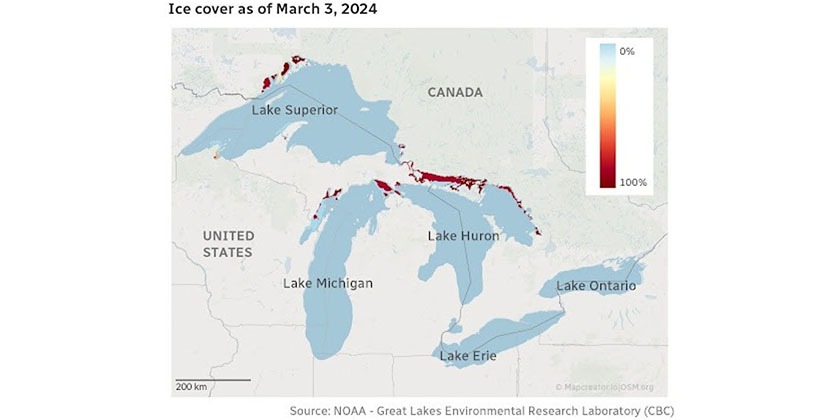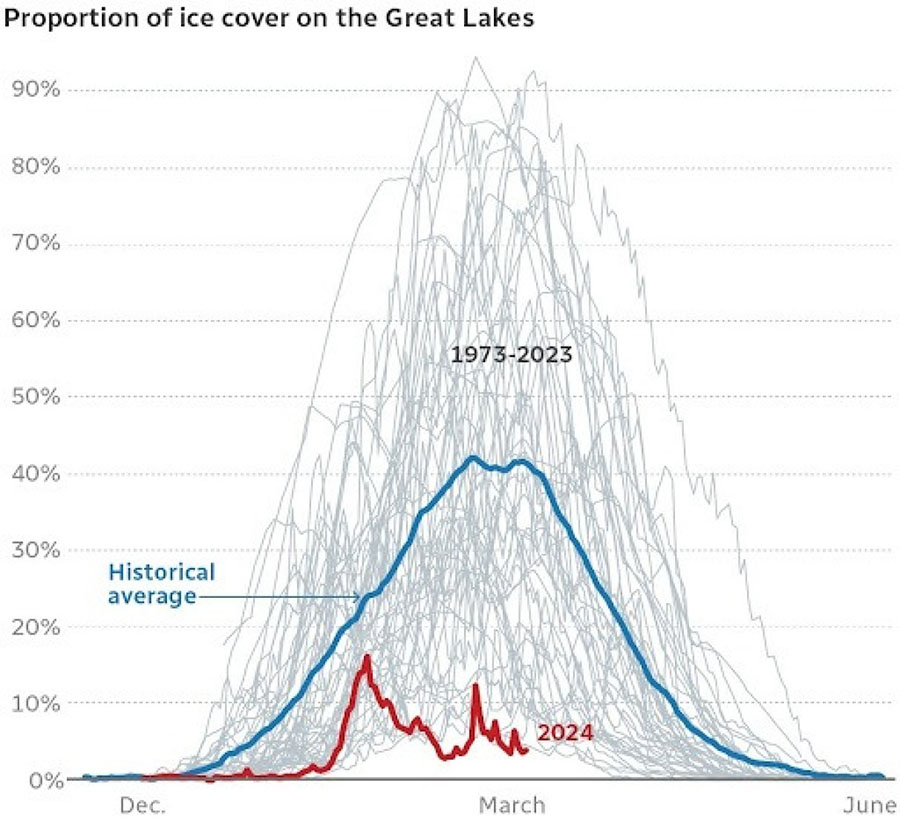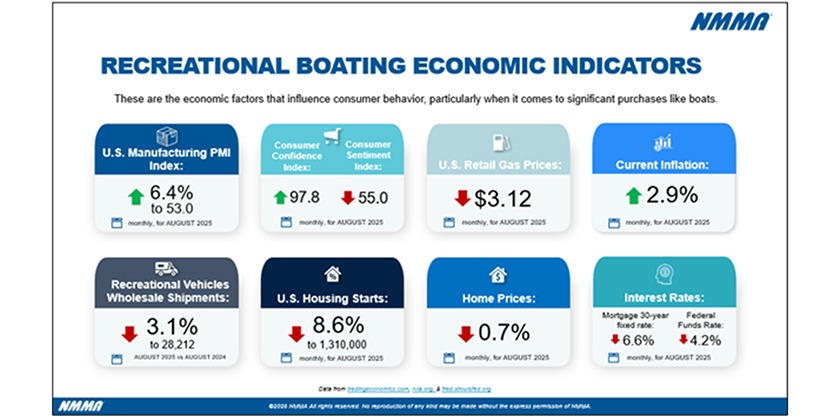The Big Picture: Great Lakes ice coverage hits new low

Apr 2, 2024
According to NOAA, ice cover on the Great Lakes usually peaks in late February or early March. But this year, it bottomed out, grazing 3.46 percent, on March 3, when the data used in this graphic were downloaded.
Satellites have kept tabs on the lakes’ iciness for more than 50 years, recording their freeze-ups and thaws. Some years are especially ice-covered. In 1979, for example, more than 94 percent of the surface of the Great Lakes froze. The highest it reached this year, however, was 16 percent, the fourth-lowest on record.

Long-term trends show that ice coverage has declined about 25 percent since 1973, and that the ice season has shortened by 27 days, chipping away at ice fishing, pond hockey and other frosty lake-top diversions.
Warmer air temperatures and the lakes’ “heat memory” — the summer heat they sop up and hang onto — influence winter ice coverage. So, yes, human-caused global warming is at play here. But this year’s strong El Niño likely also worsened the freeze-over.
With little ice cover, more water evaporates over the winter and also, the very low snowfall in many areas means that there is little snowpack to melt in the spring. Low water levels this summer are likely to be the result.



























